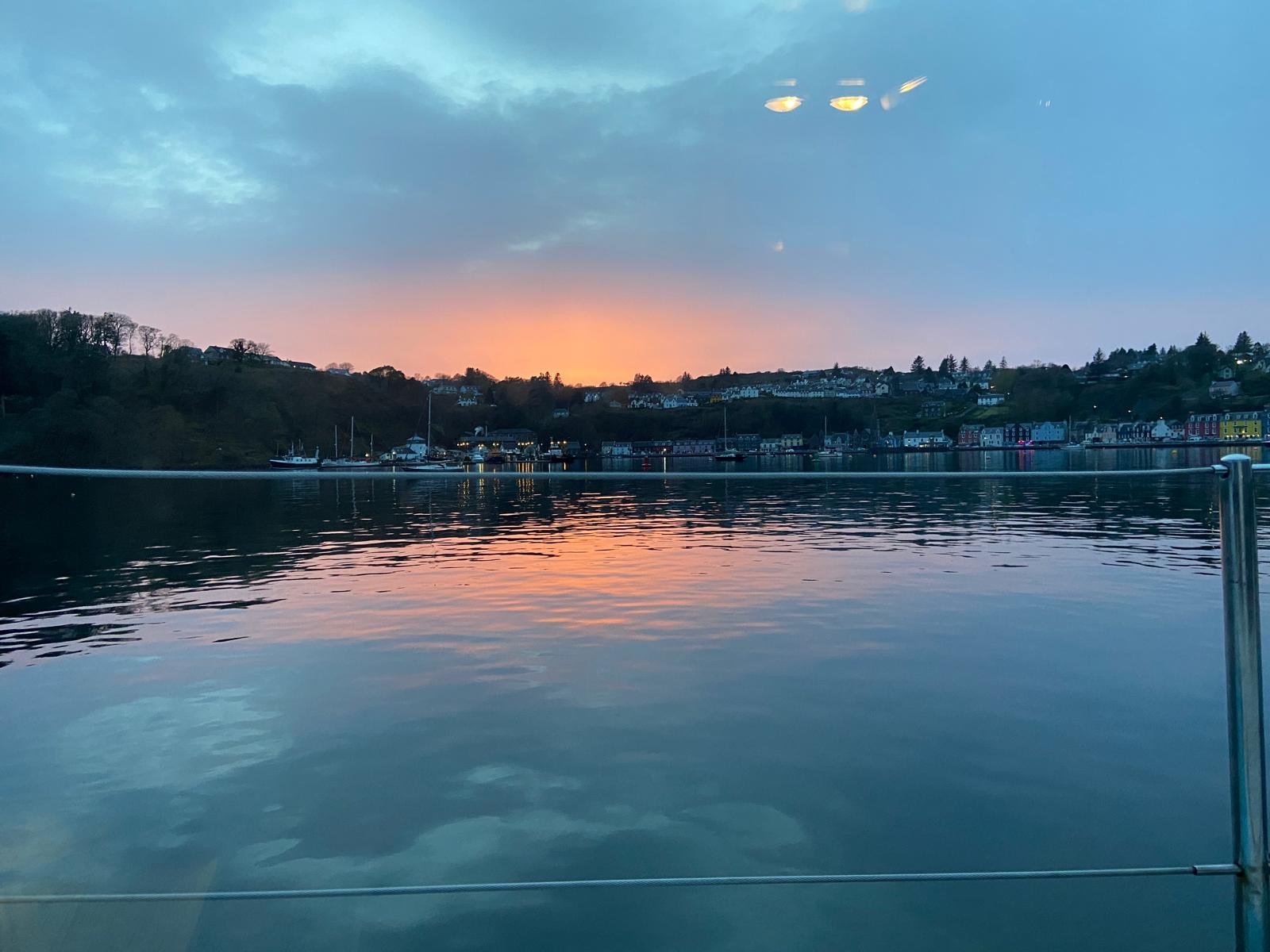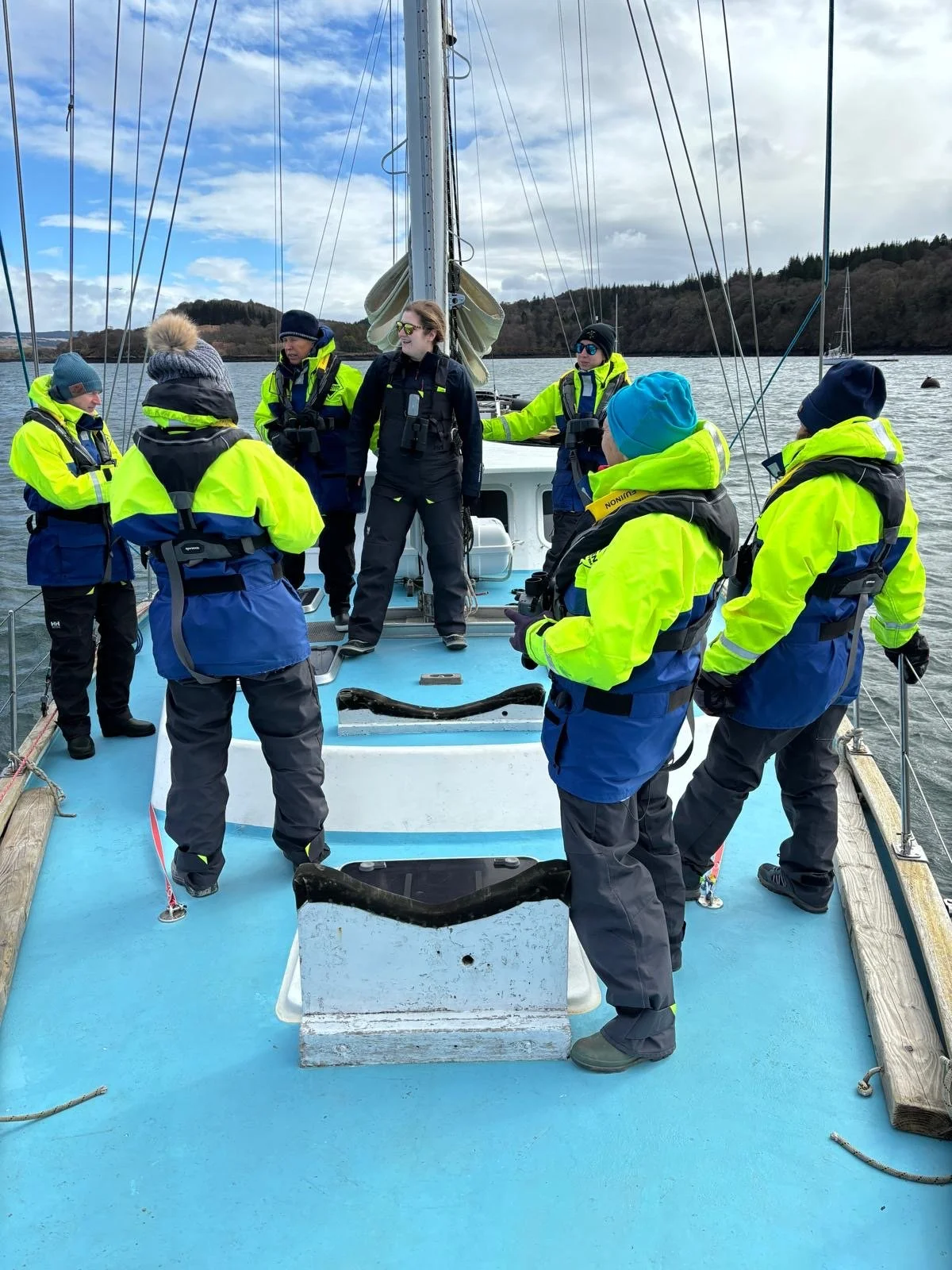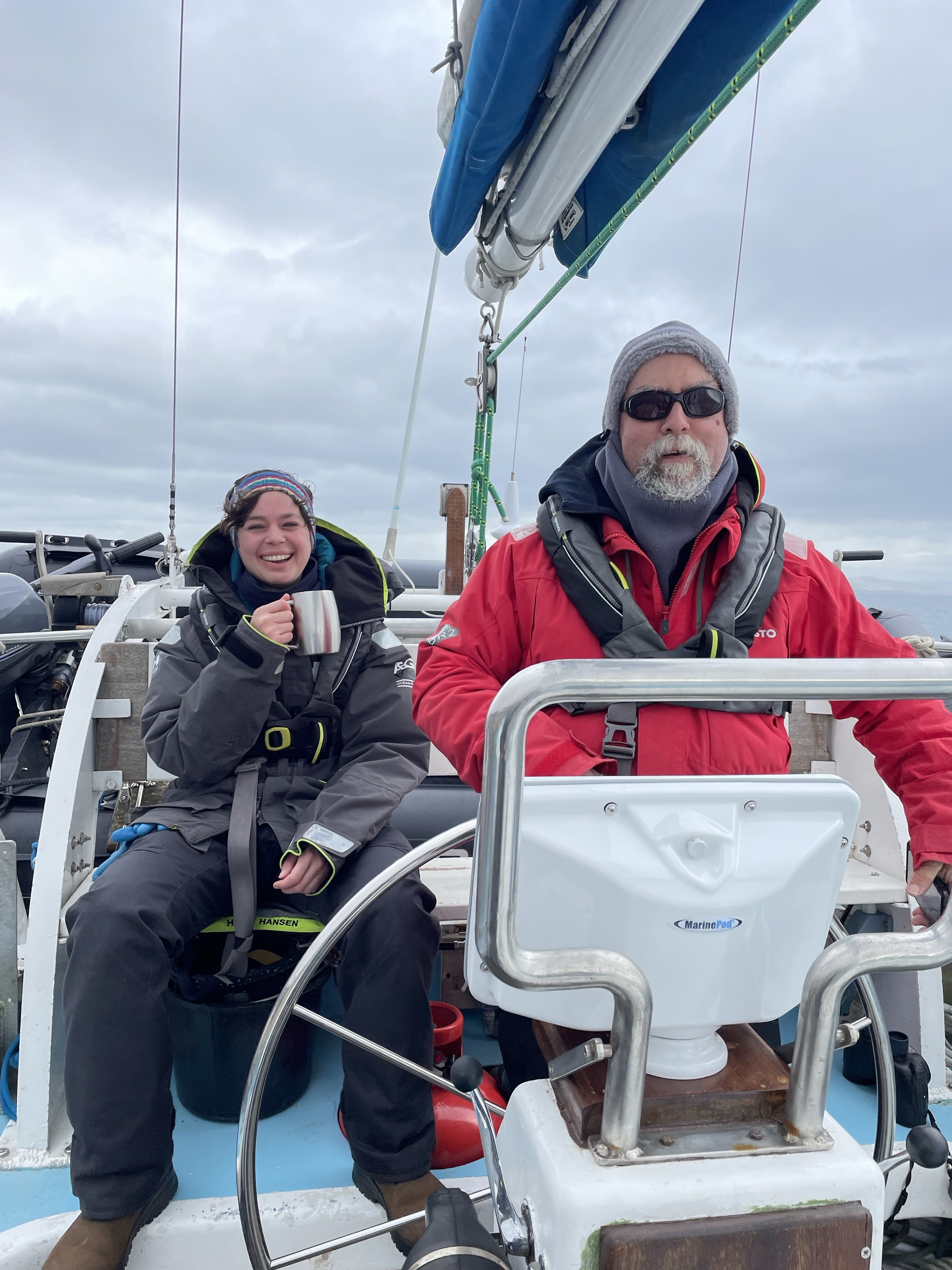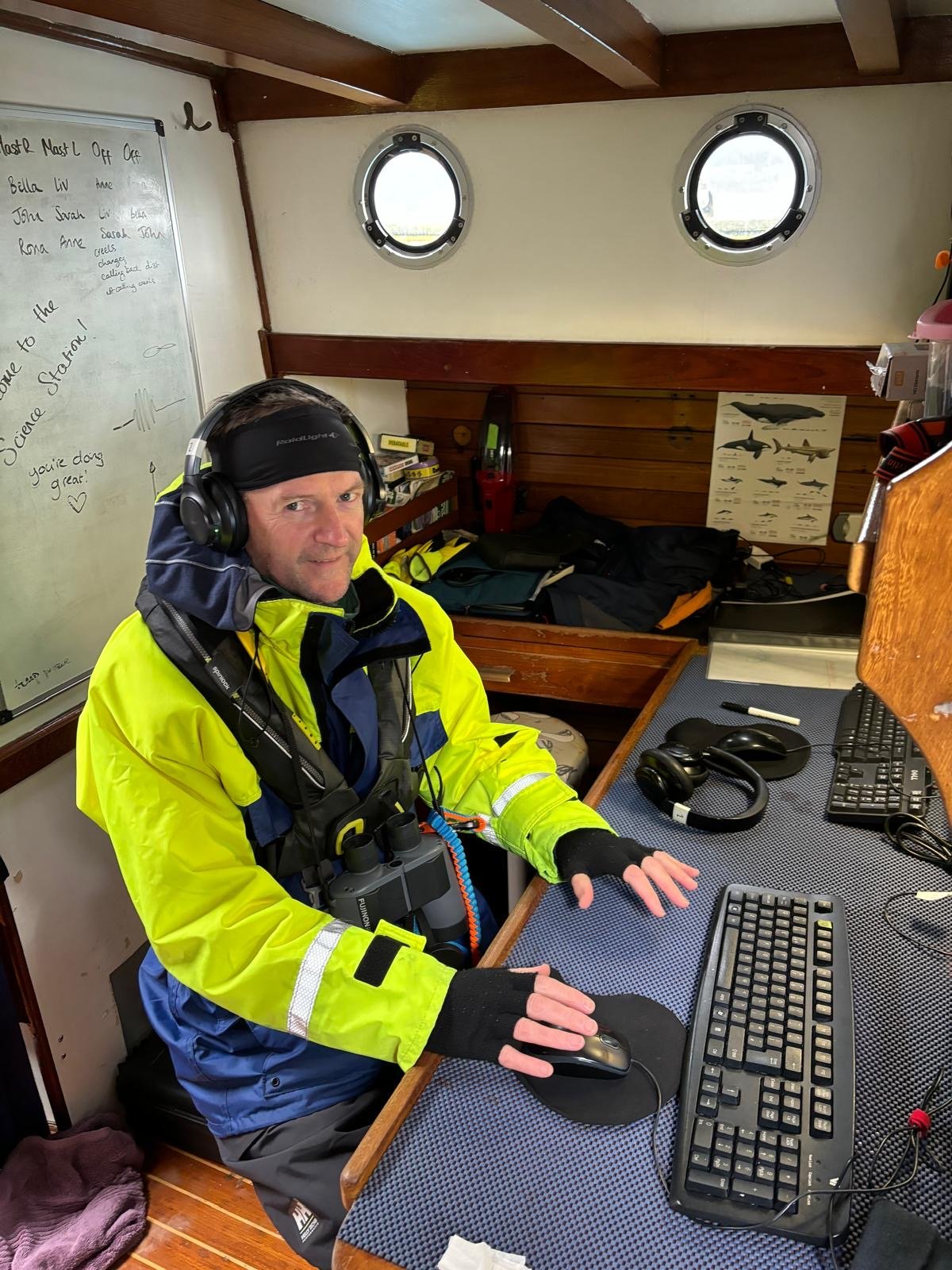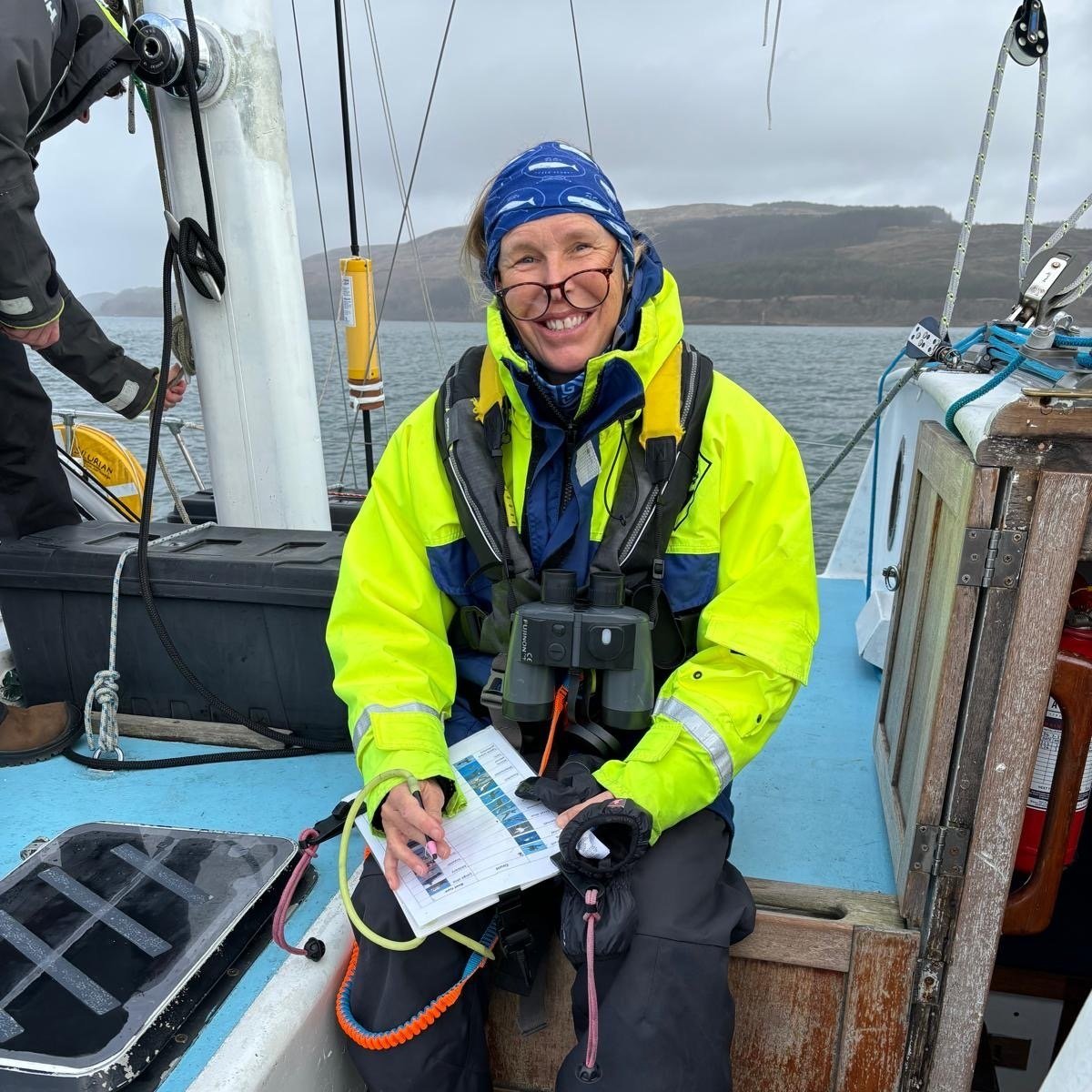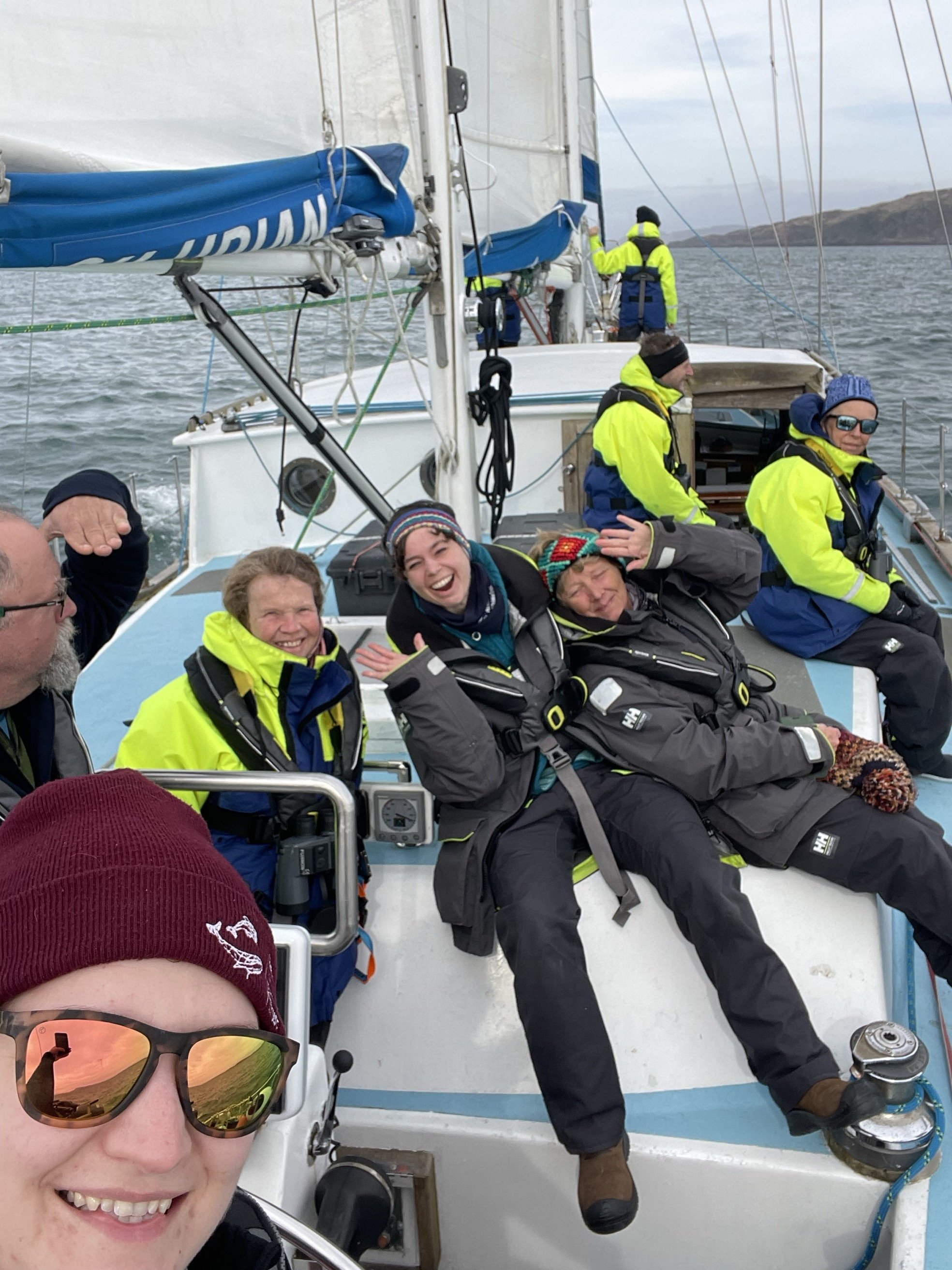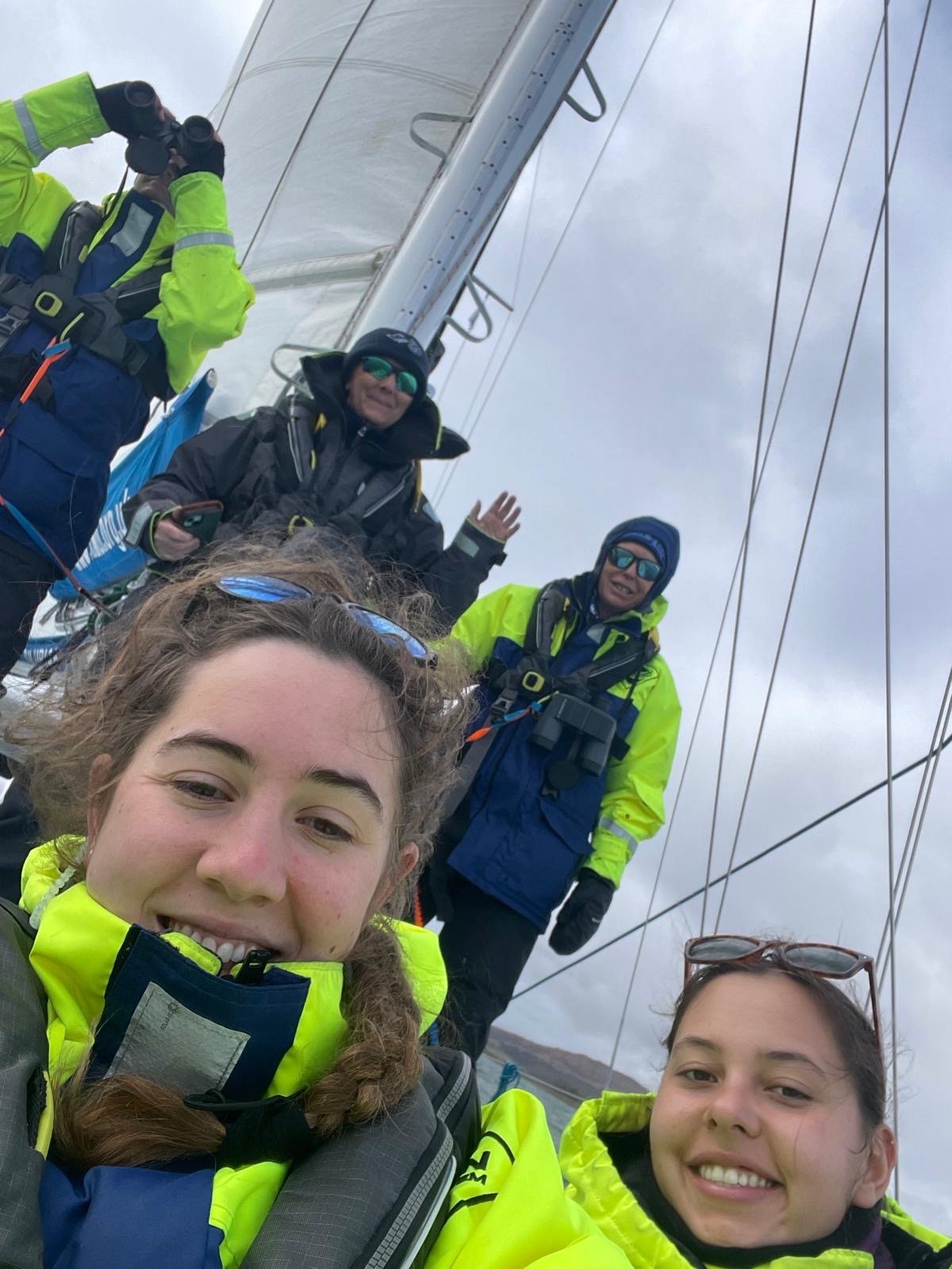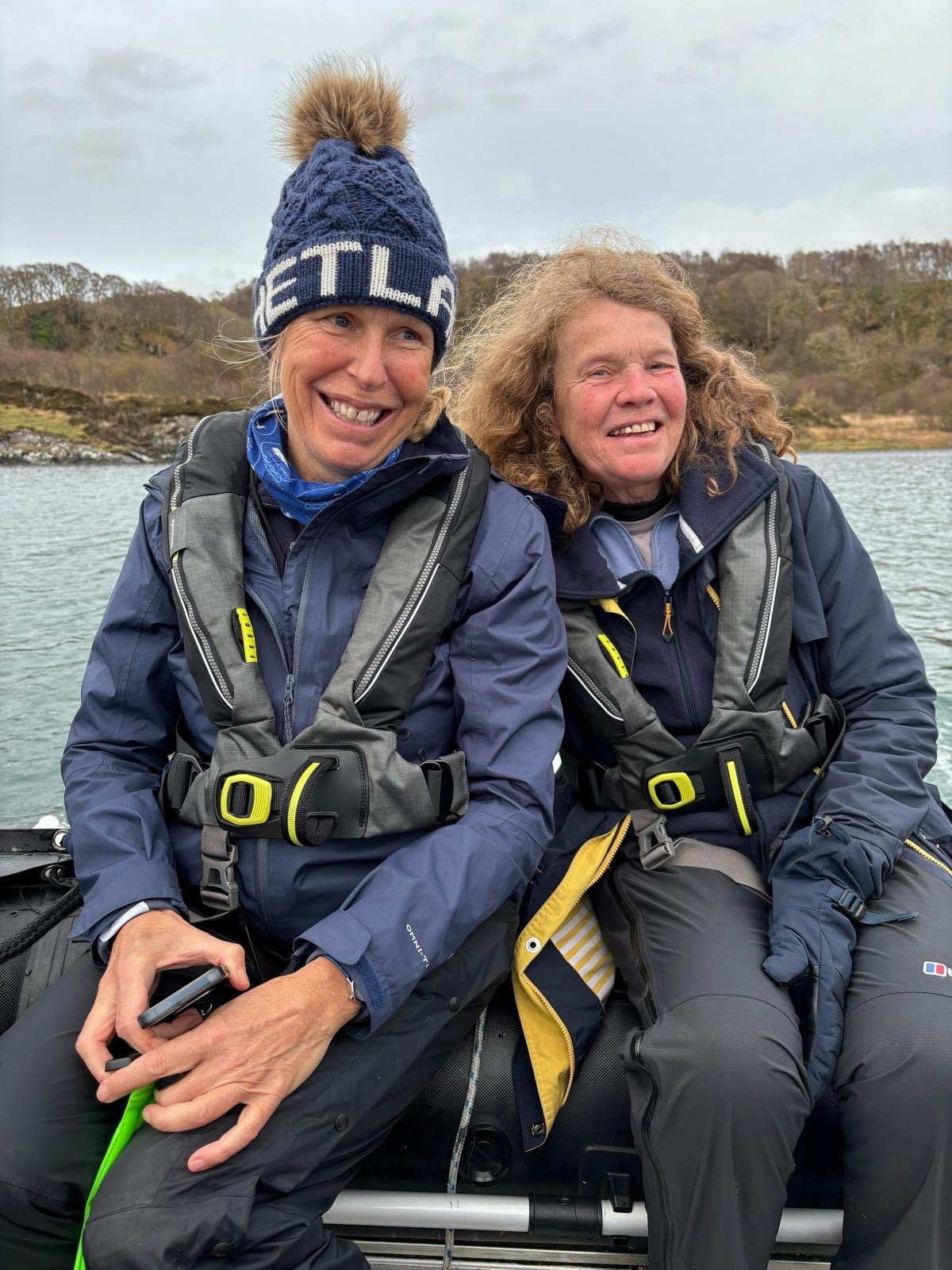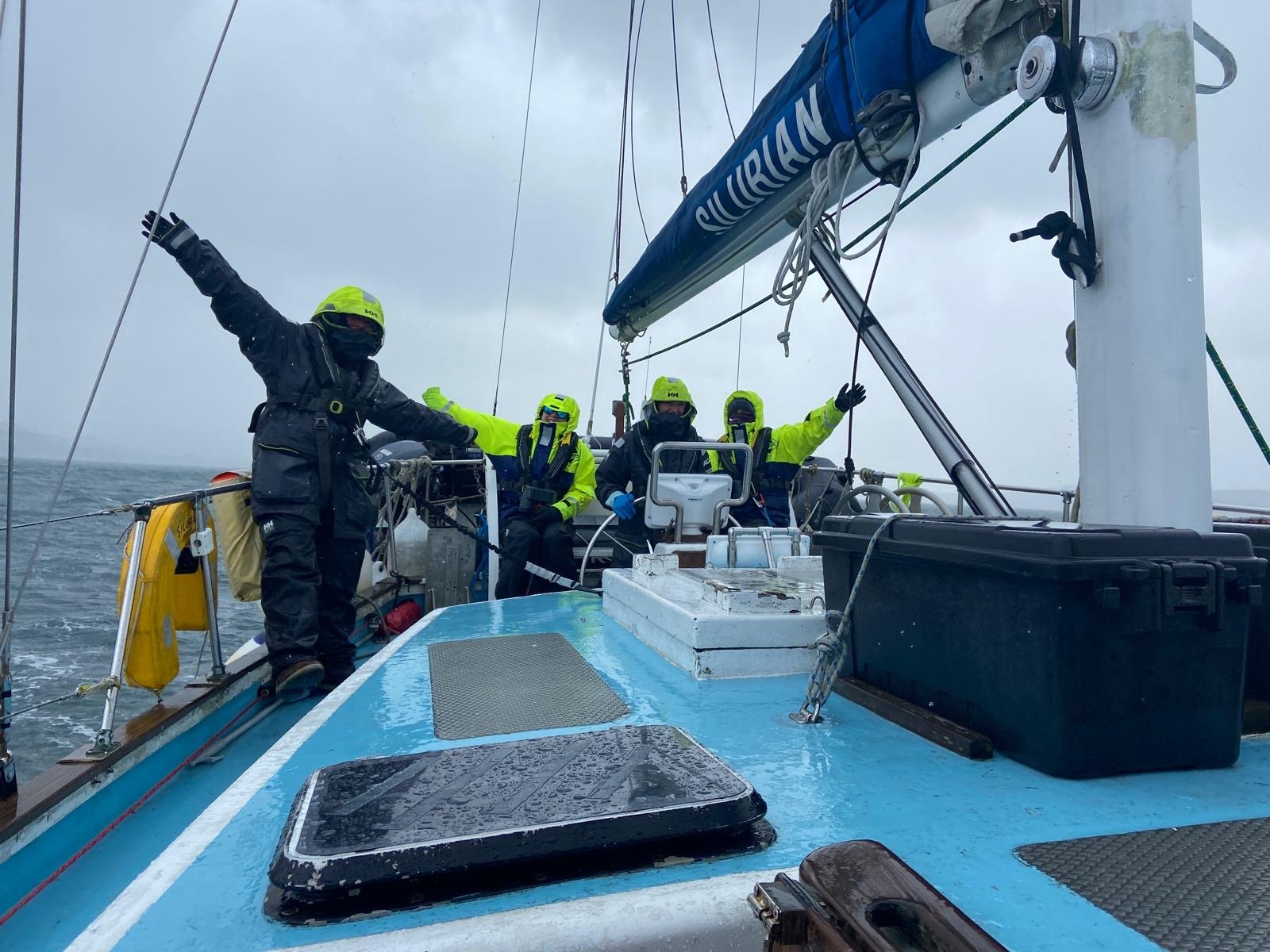Second expedition encounters porpoises, dolphins...and strong winds
The second survey of the season kicked off amidst April showers and strong winds. Our intrepid team of volunteers were trained in Silurian’s scientific protocols and battled the waves to collect valuable data. Read all about their experiences here…
DAY 1
Despite being from down south (Plymouth) it was surprisingly easy (only 6 modes of transport!) to get to Silurian! The train from Glasgow to Oban was stunning! We visited the HWDT shop in Tobermory to which had lots of information and a happy team. We joined Silurian, met our lovely crew and had an evening of learning metaphorical and literal ropes before making ourselves feel at home in the tiniest cutest cabin ever. We got to know each other quickly and had an amazing first dinner and introduction to the boat and the research.
DAY 2
We awoke at 6am to the peaceful rain on the hatches before ‘quiet time’ on board. We had our first breakfast which was porridge, fruit, cereal and toast combos.
Our first lecture of the day was species ID with Jenny who was amazingly knowledgeable about the species found here and hopefully the ones we see. Then we had a boat safety and tour of the upper deck followed by our first second breakfast - hot cross buns!. YUMMY. We had another lecture on the survey protocol which included going outside and using our outside voice to shout SIGHTING, RUBBISH or CREEL.
We started on our first course, quite choppy at times but very fun if you love adventure! Unfortunately no whales or dolphins seen, but porpoises were detected acoustically on the hydrophone. Anchored in Loch Drumbuie and had a cute harbour seal pop and say hi. We enjoyed snack time of crisps and humus, then dinner is served by volunteers John and Anne which is cauliflower curry and rice.
The stars were amazing!
DAY 3
Another super first breakfast supplied by Caren was followed by another excellent presentation by Jenny, this time to identify birds and boats.
We set off enthusiastically and immediately spotted Canada geese, a great northern diver, a harbour seal and white-tailed eagle. Then we all took up our first positions for 'on survey'. We spotted more creels, a few birds, guillemots, razorbills, a gannet, a large unidentified gull, and heard some snapping shrimps on the hydrophone.
Sadly deteriorating weather conditions forced us back to Tobermory. Standing by the mast had become quite challenging.
Once in Tobermory we combined second breakfast with lunch thanks to Luke, the 'young, good looking (his words!), Skipper. There was then a visit to the HWDT Whale Centre. The idea of a walk was rained off. Back on the boat, more tea/coffee and snacks was consumed. John appeared with a recently published copy of 'What Colour are your Wellies' by our very own Zoë (Stevenson), illustrated by Lynsey Bland. The afternoon was sent listening to Luke's fascinating presentation on sperm whales and culture in cetaceans.
After dinner (expertly cooked) by Rona and Sarah, Luke and Zoë regaled us with a tale of their daring rescue. A fellow yachtsman, in an attempt to tie up his boat, fell into the water off the pontoon, Without Luke and Zoë he may have been suffering from hypothermia before rescue.
The evening continued with a game of 'More or Less' and a highly competitive music quiz.
DAY 4
Our day started with yet another excellent breakfast, provided by Jenny. We had our first full day of surveying. Leaving Tobermory Harbour we had two sightings before we were even on survey which we took as a good sign.
Surveying started about 9 and finished at 5. Travelling southeast down the Sound of Mull the weather continued to improve, anything was better than yesterday! Second breakfast re energised us , hot rolls provided by Luke.
Entering the Firth of Lorn we experienced the exciting roller coaster ride of the overfalls, breaking waves followed by flat calm footprints. The Garvellachs were notable craggy islands from where we had a stint of wholly wind powered sailing heading back north.
With just 2 further sightings ...porpoise and common dolphins, we turned in to moor near the grand sounding Bridge over the Atlantic (a packhorse bridge) where a shore walk awaits....Luke said something about a pub too I'm sure......
DAY 5
A day of crazy weather - a day of two halves!
We set off early after a lovely breakfast from Caren, starting off the morning with calm water and the sun shining, perfect weather for some sightings… After some delicious second breakfast of veggie sausage rolls and dance to the Moana soundtrack, the wind pretty quickly picked up and the water became much choppier! We got battered by the almost 2m wave spray up at the mast, it was so much fun!! :)) Then the rain came from every direction it seemed and the crew were soaked. Our amazing team still managed to complete a full day on effort despite having quite possibly every type of weather (apart from snow) the Hebrides could throw at us, with a porpoise fin, an otter and few common seal sightings!
DAY 6
An earlier than normal start with the crew getting us underway at 7.30 whilst we had breakfast. The early start was to get ahead of the stormy weather coming in. The first two hours were pretty good weather-wise but we were unlucky with the sightings.
When the weather turned we were looking at upsidedown waterfalls where the fall was being blown back up over the lip. Despite that Anne spotted a porpoise close to Silurian. As winds picked up even more and the rain came in horizontally we moved to acoustic surveying only. After the usual super 2nd breakfast we worked our way back to port in Tobermory. Showers await with a final dinner together tonight after we clean down the boat for a final time. It's been a great trip enjoyed by all.
Across the survey period, the group surveyed nautical miles of Hebridean waters, recording four species of marine mammal - a great effort from the team in challenging conditions.
A HUGE THANK YOU TO OUR TEAM OF CITIZEN SCIENTISTS WHO JOINED THIS EXPEDITION: RONA, SARAH, JOHN, ANNE, BELLA AND LIV.


